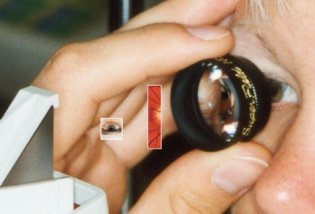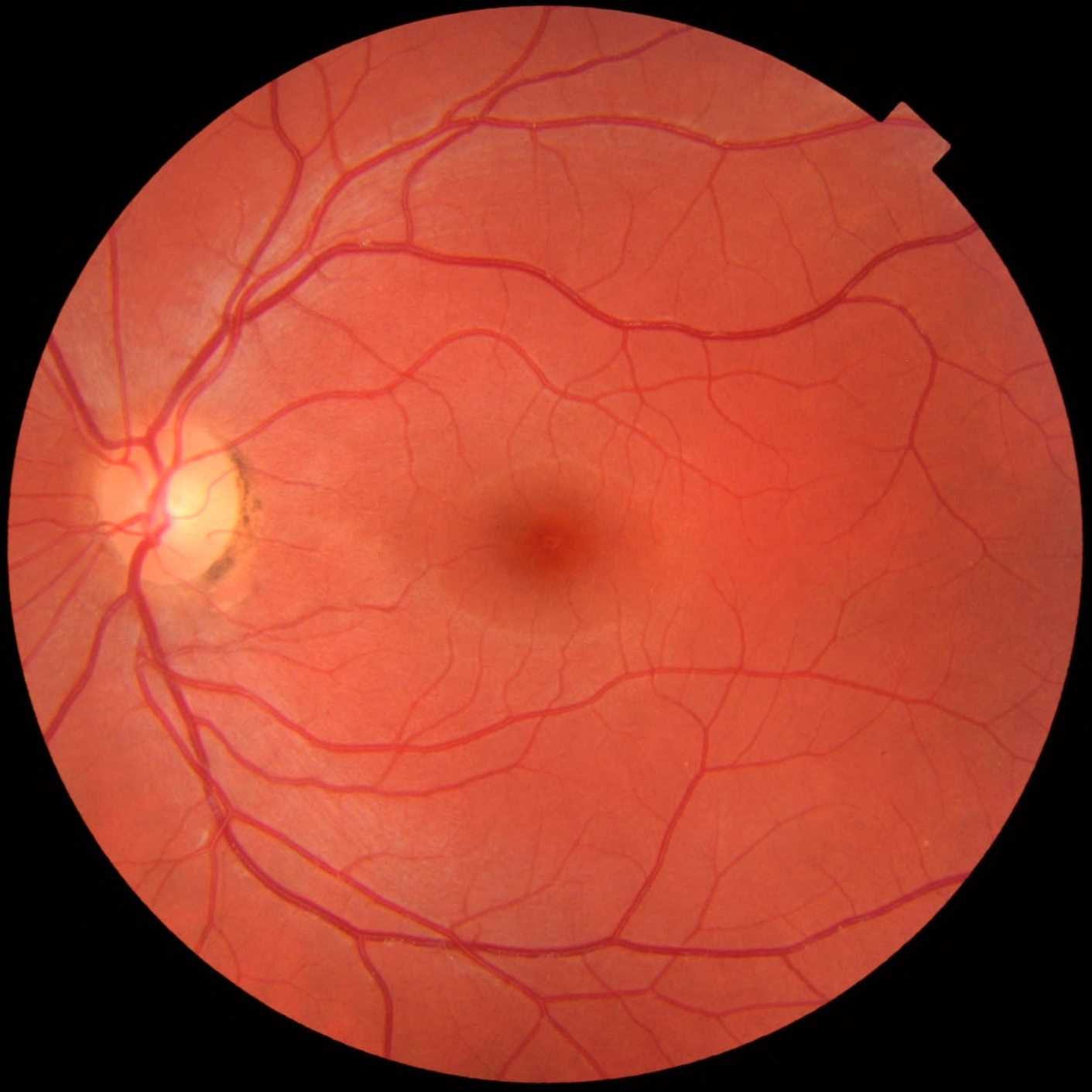Today was a university wide open day so I was helping out by taking prospective students round the building, showing them where Doctor Who and Sherlock were filmed (see here for Dr Who); answering questions; using a slit lamp and demonstrating simulation spectacles which simulate the wearer having various optical conditions like glaucoma or cataracts.
Optometry tends to be a lesser known subject and because we are little away from the main campus we don't get a massive number of people but it does mean that the ones we do get are generally interested in the subject or at the very least thinking about it. Prospective student open days are a little different from offer open days in that you need to convince the student that optometry is the career and course for them rather than convincing them that Cardiff is the best place to study the subject. This requires a slightly different approach but the main similarity is to just be friendly and talk to everyone. If you can't do that then optometry possibly the subject for you anyway.
I always enjoy helping out with open days as I know I didn't know what I wanted to do the first time I went to university. Having a look at different options and seeing what people think of the course and whether you could see yourself in their shoes is a great help in my opinion.
Random musings of a optometrist as I meander my way through life.
Wednesday, 2 April 2014
Tuesday, 18 March 2014
Coopervision tour
A couple of weeks ago, I was lucky enough to go on a trip with some fellow students to the Coopervision manufacturing centre near Southampton.So after getting up at the crack of dawn, the coach left at 8am, we were on our way.
When we got there, after a slight delay on the M4, we were treated to some nice pastries (I may have eaten quite a few) and a short talk from Mark, a member of the professional services team who had helped arrange the trip, about the company and how lenses are made.
The first soft hydrogel contact lens was manufactured by Otto Wichterle in 1961 using a spin casting machine made from Merkur, a Meccano type kit. After patenting the process he was able to make 5500 in the first few months, before the licence to the patent was sold without his knowledge to the USA.
There are currently 5 main methods of contact lens manufacture:
When we got there, after a slight delay on the M4, we were treated to some nice pastries (I may have eaten quite a few) and a short talk from Mark, a member of the professional services team who had helped arrange the trip, about the company and how lenses are made.
The first soft hydrogel contact lens was manufactured by Otto Wichterle in 1961 using a spin casting machine made from Merkur, a Meccano type kit. After patenting the process he was able to make 5500 in the first few months, before the licence to the patent was sold without his knowledge to the USA.
There are currently 5 main methods of contact lens manufacture:
- Spin casting - still used mainly by Bausch and Lomb
- Lightstream technology - used by Alcon which uses UV light to cure the monomer
- Lathing - old fashioned method, mainly used for rigid gas permeable lenses
- Hybrid - a Coopervision exclusive with front surface moulded and back surface lathed
- Cast moulding - main technique used for mass production of soft contact lenses
The first stop for my group was a trip round the DK128 Biofinity manufacturing process, or part of it anyway, so after getting dressed up in a funky gown, hat, shoe covers and static strips we were allowed in. There we were shown some of the 12 operating lines that manufacture over 250-280,000 lenses between them every 12 hours, with each line only needing 10 people, several robots and a giant sunbed - a long tunnel lit by UV light to help set the monomer and remove impurities.
One interesting fact that came up from this part is that due to the use of colour to help track batches and individual cavities within each batch people with colour vision defects can't work in this section of the business.
After a tasty lunch, including more cake, it was time for a trip round the second part of the factory, the lathing section. In here we got to see how a button of monomer is lathed down to a thin RGP or in the case of the new hybrid methods, half moulded and half lathed. This is a slower (and more expensive) method but better for RGP and allows tints to be applied and for a very particular level of quality control. The production rate can vary between 20 and 5000 per day depending on the method and order. A custom order can be made and sent out in as little as 2 days.
We then had a talk about the summer scholarship programme, the values of the company - dedication, inventive, partners and friendly and got to here the opinion of the UK MD of manufacturing. He believes that the factory will increase production from 1.6 to 2.5 million within the next 3 years and that the market is moving more towards silicone hydrogel as this becomes feasible for daily disposables, and that drug dispensing and smart lenses will be a niche market. (I'm not so sure about this last point, I believe there is a large potential there and can see it growing as the technology develops). A quick run through some of Coopervision's lens technologies including Proclear for dry eye and presbyopic patients and multifocal lenses and it was time to go home (with extra cakes and goody bags).
After a quick trip home I was lucky enough to wind up with all the spare cake, so all it leaves me to do is thank our hosts; Mark, Lee, Ben, Carly, Elaine, Tracy and Steve for their time and for organising the trip. I found the trip fascinating seeing how a liquid polymer is transformed into a thin lens that we put into a patient's eyes.
In the last couple of weeks I have had the opportunity to use the Coopervision Biofinity lenses that we saw made, okay not the exact same ones but you get the idea. The lenses were fairly easy to insert, even with my kack-handed insertion skills; and whilst I only occasionally wear coloured lenses (joys of being emmetropic) but found the Biofinity very comfortable for the short period I had them in. It will be really interesting to try them with real patients next year and compare what they found to what I found. At least now if a patient asks how lenses are made I can give them a full answer, knowing me probably more than what they want.
Monday, 3 March 2014
Opfest
This last weekend was Opfest weekend. A weekend where optometry students from the different universities that offer the course come together to compete in a variety of sports for the optic cup. This year it was held in Cardiff.
We had teams from City, Aston, Bradford, Anglia Ruskin, Manchester, Glasgow Caledonia and Plymouth. Only Ulster weren't able to make it over. Teams started arriving from 5 o'clock on Friday and got ready for the emergency services themed night out at Oceana.
After an all too brief amount of sleep everyone assembled for the first sport of rounders. The support was loud (too loud for those with a hangover) with a special mention to the City cheerleading squad led by the Carrot. (Apparently their sports teams used to get around by horse drawn carriage with a carrot to get the horse to go faster).
A mention should also go out to Keith from Glasgow who played all the matches wearing a shower cap and drinking from a can of strongbow and despite getting hit in the head by the ball from his own player he carried on without spilling a drop.
Next up was touch rugby with some misunderstanding of the rules but play continued merrily on regardless. After a brief break for lunch the rugby concluded with a Cardiff vs Bradford final, won by Bradford.
So we moved onto the final two sports, football for the boys and netball for the girls and some boys up for a laugh, including me. Having me play goal keeper against a 5' 4" shooter was possibly a little mean though but everyone saw the funny side.
A brief interlude led to an impromptu Cardiff vs Cardiff half which descended rapidly into complete anarchy but was rather amusing. The final of the netball was again Cardiff vs Bradford with Cardiff running out 10-0 winners.
At this point I retreated home for a quick nap, I'm a bit older than most of the students and can't survive on that little sleep for long. Feeling refreshed I headed off to Red Hot World Buffet for a lovely dinner, all you can eat is good, before the awards were given out, with the optic cup heading back up to Bradford (booo!). A massive thank you goes to Shai, Luke and Nina for organising it all.
A great weekend was had by all, this is evidenced by the fact that most of us here in Cardiff and people I know on twitter are still recovering from all the aches and pains from the weekend.
Saturday, 22 February 2014
Show them the money
Earlier this week I saw my last paid patient. I say this with slightly mixed emotions, I like the paid patients as they give me a chance to test my skills on a "normal" person (someone who isn't a student), they have some interesting conditions in their eyes and they are lovely people to have a chat with. However I am slightly scared that they have finished because it means the next time I'm testing a member of the public they won't be being paid for their time and they will expect me to know what I am doing. Thankfully that won't be until October so I have 6 months to practice and stew.
I remember what I was like before I saw my first paid patient back in November - slightly nervous and resigned to my fate. This feeling didn't get much better when I discovered my first patient was low vision due to being aphakic and had nystagmus (the eyes keep moving all the time). However once I got into the routine it was fine, the patient has been through it so many times before, the supervisors are very helpful and I started to believe in my own abilities.
Thanks to the paid patients I have dealt (at least semi) successfully with low vision, nystagmus, small pupils (the bane of optometrists); have used a slit lamp in anger, tried Volk on real patients, been confused by contrast sensitivity and why reading adds don't add up to what they should.
I have also seen pinguecula, the beginning of a corneal ulcer, a patient with bitemporal hemianopia (who had had a pituitary tumour removed),asteroid hyaltosis (think a snowglobe in the eye) and all sorts of variations of normal.
I would like to thank all the patients, staff and supervisors for their time and help.
Friday, 14 February 2014
Eyes wide shut
The last few weeks have mostly been spent going through lots of data writing up a report on the effects of mydriatics and cycloplegics, in particular tropicamide and cyclopentolate. I am sure most optometry students and practitioners will be familiar with what they are used for but for those who don't here is a quick recap:
Tropicamide is mainly used to dilate the pupil to allow the practitioner a better view of the retina at the back of your eye especially to see the periphery, to check for haemorrhages, detachments and other serious pathologies. It works by relaxing the iris muscle sphincter.
Cyclopentolate also dilates the pupil but it's main function is to relax accommodation, the ability to focus on close up objects. This is needed to determine full refractive error in young children who have high accommodation levels; in latent hypermetropes - people who are unable to fully relax their accommodation and for preliminary testing for laser surgery. Cyclopentolate works in a similar way to tropicamide but also paralyses the ciliary muscle which controls accommodation. The downside is that it takes longer to wear off so patients are unable to read for several hours afterwards and may be sensitive to bright lights.
Here is a great video of someone looking at their own fundus using a lens and a mobile phone after they have been dliated. This is just the central fundus but can view periphery with other techniques.
Self fundus exam video
The drugs do sting a little bit when they are put in but they are only put in when they are needed, so if an optometrist suggests you are dilated it is for a good reason and it is advised you go ahead with it.
Before these drugs were invented other methods were used primarily to make the eyes look wide and beautiful, these included cocaine - dilated peoples are one of the more obvious signs that someone has taken cocaine. The plant Belladonna, also known as deadly nightshade, was also used by women in the Middle Ages to dilate their pupils to make them look more attractive. Personally having dilated pupils doesn't feel attractive, it gives me a slightly wide eyed and scary look.
Not all dilated pupils are due to drug use, either illegal or ophthalmic. Some are also caused by nerve damage, like the case of David Bowie, whose left eye is permanently dilated after he suffered an injury in a fight when he was young.
Tropicamide is mainly used to dilate the pupil to allow the practitioner a better view of the retina at the back of your eye especially to see the periphery, to check for haemorrhages, detachments and other serious pathologies. It works by relaxing the iris muscle sphincter.
Cyclopentolate also dilates the pupil but it's main function is to relax accommodation, the ability to focus on close up objects. This is needed to determine full refractive error in young children who have high accommodation levels; in latent hypermetropes - people who are unable to fully relax their accommodation and for preliminary testing for laser surgery. Cyclopentolate works in a similar way to tropicamide but also paralyses the ciliary muscle which controls accommodation. The downside is that it takes longer to wear off so patients are unable to read for several hours afterwards and may be sensitive to bright lights.
Here is a great video of someone looking at their own fundus using a lens and a mobile phone after they have been dliated. This is just the central fundus but can view periphery with other techniques.
Self fundus exam video
The drugs do sting a little bit when they are put in but they are only put in when they are needed, so if an optometrist suggests you are dilated it is for a good reason and it is advised you go ahead with it.
Before these drugs were invented other methods were used primarily to make the eyes look wide and beautiful, these included cocaine - dilated peoples are one of the more obvious signs that someone has taken cocaine. The plant Belladonna, also known as deadly nightshade, was also used by women in the Middle Ages to dilate their pupils to make them look more attractive. Personally having dilated pupils doesn't feel attractive, it gives me a slightly wide eyed and scary look.
Not all dilated pupils are due to drug use, either illegal or ophthalmic. Some are also caused by nerve damage, like the case of David Bowie, whose left eye is permanently dilated after he suffered an injury in a fight when he was young.
Thursday, 30 January 2014
How many is too many?
As some of you may have seen Hertfordshire university recently announced it's intention to launch a 4 year optometry course within it's School of Life and Medical Sciences. If you haven't seen it you can find the information here.
This has caused a bit of a debate in the optical community,you only need to look at the comments on the linked article to see that not everyone is in favour of it. In fact, a petition has been set up to ask the GOC not to accredit the new course and to put a cap in place on the number of places available to study optometry each year (here).
This raises a few questions about what having more qualified optometrists would do to the market for jobs and wages and what it would mean for patients. Up until recently there were only 8 places you could qualify as an optometrist in the UK, Plymouth were the 9th and their first set of students will graduate this summer so we don't know what effect that will have on the market yet.
More graduates means more pre-reg places are needed but Specsavers and others seem to have increased their intake and more places are now offering pre-reg schemes like Tesco. It will also open the course and profession up to more people - I can't see the entry requirements dropping but would give people more choice where to go, may raise awareness of the course and mean that people who just miss the grades are possibly more likely to be accepted on the course.
On the flip side, having more graduates will mean the top locations will become harder to get and may be harder to get onto pre-reg schemes. If everyone does get onto courses it will certainly mean there is more competition for jobs, which people fear may drive salaries down. However, if there is more competition it will mean the better candidates get the jobs which should mean better patient care in the long run.
A cap might work to solve this occurring again in the future with either another university wanting to start a course or a current university expanding its intake. However in other courses that have a cap eg. pharmacy which was the most recent to have a cap imposed, the jobs afterwards are funded by the NHS, whereas in optometry the vast majority of jobs are not NHS funded but private.
The thing is, at the moment all this is a moot point as the GOC doesn't have the ability to discriminate on whether a course is good for the profession or not, as long as the university meets the criteria set out the GOC has no choice but to accredit the course. As a spokesperson said "Changing this would be a matter for the government.", so maybe if people want to change it they should be petitioning the government to amend the Opticians Act (1989) so that they can take into account the views of the profession and what affect a new course would have on it.
What are your opinions on the proposed new course? Let me know in the comments below or on Twitter (@iaintheoracle)
UPDATE:
There have been a couple of updates to this story appearing online since I published the blog.
1. Optician magazine have added another news story reinforcing the point that the GOC can't make a decision based on market forces, just whether the course meets the required standards. They have also put up a comment article about the situation in a similar fashion to this blog but wondering who is behind the campaign and why other people should be denied the chance to study optometry. However it is asking for the AOP and GOC to work together to create a sustainable workforce model - I don't think either has a say in this, it is down to government to put a cap on if it wants and market forces to balance supply and demand.
2. The AOP have put out a statement in their Blink newsletter:
"Recent years have seen optometrists’ salaries falling and some pressure on pre-registration places, so there is understandable concern from students and practitioners about the growth in numbers. It is interesting to note that this government, in 2012, introduced a cap on pharmacy student numbers. The argument put to the Health Minister, Lord Howe, was that a failure to restrict the increasing number of pharmacy places could leave graduates unable to complete the training needed to practise. It may be time for the government to consider whether the same circumstances apply to optometry. The AOP is working closely with the College of Optometrists to gather the hard evidence needed to protect the future of the profession and the patients it serves."
Tuesday, 14 January 2014
Do you know the colour of your loved one's eyes?
They say that eyes are the window to the soul, so that must make the iris the tint and if you look in detail you can see a fabulous stained glass window.
However how often do you notice what colour someone's eyes actually are? Think back to when you last had a chat with the one you love or a good friend, you must have looked at their face but what colour eyes do they have?
The answer is very rarely probably. The reason this has come to mind is that I have recently had some coloured contact lenses and been wearing them on nights out and at my parent's family do over Christmas to see if anyone noticed. In fact at my parent's I had one green lens in and one eye without lens so blue/grey. Total number people to notice on me being heterochromic - none.
Admittedly celebrities often disguise it with contact lenses but did you know that Benedict Cumberbatch, Mila Kunis and Simon Pegg all have different coloured eyes.
However how often do you notice what colour someone's eyes actually are? Think back to when you last had a chat with the one you love or a good friend, you must have looked at their face but what colour eyes do they have?
The answer is very rarely probably. The reason this has come to mind is that I have recently had some coloured contact lenses and been wearing them on nights out and at my parent's family do over Christmas to see if anyone noticed. In fact at my parent's I had one green lens in and one eye without lens so blue/grey. Total number people to notice on me being heterochromic - none.
Admittedly celebrities often disguise it with contact lenses but did you know that Benedict Cumberbatch, Mila Kunis and Simon Pegg all have different coloured eyes.
I would like to say I buck this trend but that would be a lie, I couldn't tell you the eye colour of some of my best friends or my wife and I failed to spot that one person I deal with regularly in the student's union has heterochromia until she told me (I then told her what it was called).
Science bit:
The colour of your eyes is determined by a complex interaction between the pigment melanin and other components of the iris including haemoglobin in the blood vessels and collagen in the stroma and vessels. The full method is not understood and neither is the method of inheritance.
Subscribe to:
Posts (Atom)


















